UL-listed life safety rope gets firefighters in and out of tough spots
It’s a scene that could have come straight out of a movie: As flames shot 20 feet in the air from the roof of a Manhattan building in the throes of a six-alarm fire, FDNY firefighters performed a daring rope rescue, risking their own lives to save an 81-year-old man trapped on the fifth floor.
The rescue was executed flawlessly thanks to the bravery and skill of the firefighters—and the reliability of the rope that a rescuer used to reach the elderly man and haul them both to safety. “There was not much visibility and all I could hear was the voice of the civilian,” Firefighter Walter Gilroy later recalled in an NYC Fire Department report. “Everything could have gone wrong. The rope could have snapped. We knew we had about a minute to get this all done.”
With so much at stake, a Canadian rope manufacturer aims to help firefighters confidently perform rope rescues with the Bulwark Safety X static rope, one of the only ropes to receive the stamp of approval from UL (formerly Underwriters Laboratories) for meeting or exceeding stringent safety standards for life safety rope. It also fulfills the technical life safety rope requirements of the National Fire Protection Association’s NFPA 1983: Standard for Life Safety Rope and Equipment for Emergency Services.
In a previous blog, we introduced the Night Saver Rope, a glow-in-the-dark rope popular for marine uses, firefighting search lines, camping, and much more. In this blog, we explore the many uses of Bulwark Safety X and what makes it an excellent choice for fire departments.
If education isn’t the reason for your visit today, feel free to skip to our online selection of rope.
Life safety rope: an essential tool for firefighters
Besides hoses gushing water, few tools have proven to be as essential to firefighters as rope. From rescues to orientation in low-visibility situations, first responders have relied on rope since the days when fire engines were pulled by horses.
Firefighters use ropes to lower or hoist people to safety, rappel in or out of areas with limited or perilous access, or hoist equipment during emergencies. They also tie a rope when they enter a smoky space and hold the line so they can find their way out with less risk of becoming lost or separated.
Ropes provide an easy-to-follow trail so help can quickly locate rapid intervention teams after they are deployed to find a downed, lost, or injured firefighter. And ropes are a self-contained fire escape from a window or roof for firefighters trapped in burning buildings—when conditions deteriorate so quickly that there isn’t enough time to mount a ladder outside.
Until the first edition of NFPA 1983 was published in 1985, there were no agreed-upon standards for equipment used in rescue scenarios. But after two firefighters plunged to their deaths in 1980 when the rope supporting them snapped during a rescue operation at a high-rise in Harlem, N.Y., fire services asked the NFPA Technical Committee to develop a standard for rescue ropes.
NFPA 1983 requires manufacturers of life safety rope to be certified to ISO 9001 and specifies performance, labeling, user instruction, and test method criteria. Product testing and certification by an independent third-party certification organization are also mandated. Rope that does not carry the symbol of a third-party certification organization doesn’t meet NFPA 1983 standards, even if the label claims otherwise.
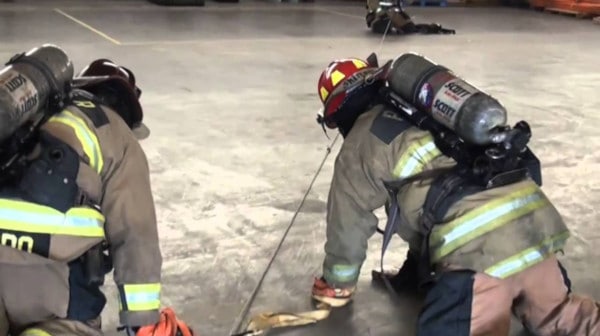
NFPA performance standards for life safety rope
As one of only a handful UL-listed technical-use life safety ropes on the market, the Bulwark Safety X meets and exceeds NFPA requirements. NFPA 1983 (3.3.63.4) establishes life safety rope as “rope dedicated solely for the purpose of supporting people during rescue, fire-fighting, other emergency operations, or during training evolutions.”
Technical-use rope is defined in 3.3.71 as “an equipment item or manufactured system designed for technical-use loads, and escape based on design loads that are calculated and understood.” Built to support and manipulate the weight of one or more people through a range of rescue scenarios, ropes that fall into this category are high-strength and add less weight to firefighter gear than the general-use life safety ropes approved for the heaviest loads.
NFPA 1983 (A.3.3.35) establishes that rescue personnel may elect to use either technical use or general use labeled equipment based on anticipated loads and acceptable safety margins established by the authority having jurisdiction (AHJ). NFPA notes that highly-trained or specialized rescuers performing complicated rescues especially gravitate toward the lighter weight of technical-use equipment.
From the 2017 edition of NFPA 1983
7.1* Life Safety Rope Performance Requirements.
7.1.1* Technical-use life safety rope shall be tested for breaking strength and elongation as specified in Section 8.2 and shall have a minimum breaking strength of not less than 20 kN (4496 lbf), a minimum elongation that shall not be less than 1 percent at 10 percent of breaking strength, and a maximum elongation that shall not be more than 10 percent at 10 percent of breaking strength.
7.1.3* Technical-use life safety rope shall be tested for size as specified in Section 9.1 of Cordage Institute specified in Section 9.1 of Cordage Institute Standard CI 1801, Low Stretch and Static Kernmantle Life Safety Rope, and shall have a diameter of 9.5 mm (3∕8 in.) or greater but less than 12.5 mm (1∕2 in.). For reporting purposes, the calculated diameter of all new life safety rope shall be rounded to the nearest 0.5 mm (1∕64 in.).
7.1.5* Fiber utilized for all life safety rope shall be tested for melting as specified in ASTM E794, Standard Test Method for Melting and Crystallization Temperatures by Thermal Analysis, and shall have a melting point of not less than 204°C (400°F).
7.1.6 Life safety rope product labels and identification tape shall be tested for legibility as specified in Section 8.10 and shall be legible, shall remain in place, and shall not be torn or otherwise damaged.
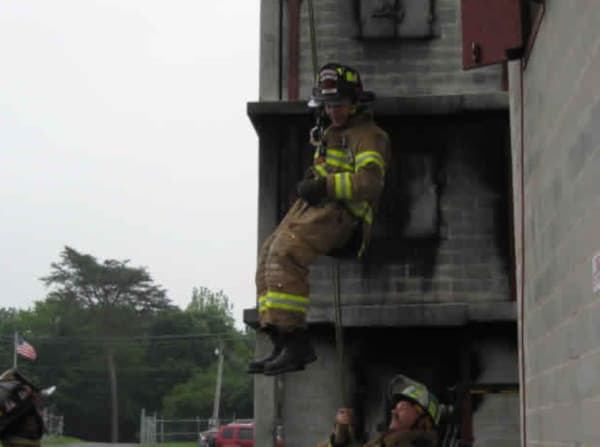
NFPA guidelines for selecting firefighting rope
The 2018 edition of NFPA 1858: Standard on Selection, Care, and Maintenance of Life Safety Rope and Equipment for Emergency Services further enhances firefighter safety with guidelines for selecting life safety ropes. Section 5.2 points out key factors that must be considered including what it’s made of, how it’s woven, elongation, minimum breaking strength, and more:
5.2.1* Specific performance or specific features shall be selected based upon the intended application of the rope being purchased. If the organization has multiple intended applications for life safety rope, the purchase of multiple ropes shall be considered that best fit those applications.
5.2.2* Type of fiber, including but not limited to nylon, polyester, or para-aramid, shall be considered
5.2.3* Construction, including but not limited to kernmantle, double braid, single braid, or laid, shall be considered in accordance with CI 1202, Terminology for Fiber Rope.
5.2.4* Elongation, including but not limited to low stretch or static, shall be considered.
5.2.5* The required minimum breaking strength (MBS) to provide a sufficient safety factor for the intended application(s) shall be specified to ensure adequate strength.
5.2.6* The diameter shall be considered to ensure compatibility with the other components used in the system and the ability to grip the rope.
5.2.7* The total weight to be carried shall be considered as it is determined by length, diameter, and material of the rope.
5.2.8* The hand shall be considered for ease of tying knots, smoothness running through the gear, and abrasion resistance.
5.2.9* The rope color shall be considered for the ability to be seen or camouflaged, as well as the ability for one rope to be distinguished from another when rigged side by side.
5.2.10* The length shall be considered, including but not limited to lengths sufficient to rig the longest anticipated site, with additional rope length for anchoring, mechanical advantage systems, or other rigging needs.
5.2.11* The heat resistance shall be considered, including but not limited to melting point, critical temperature, and friction.
5.2.12* For construction that includes a sheath, the sheath shall be considered, including but not limited to the number of yarns, braid patterns, thickness, and tightness as they apply to the hand; the abrasion resistance; and the amount of sheath slippage.
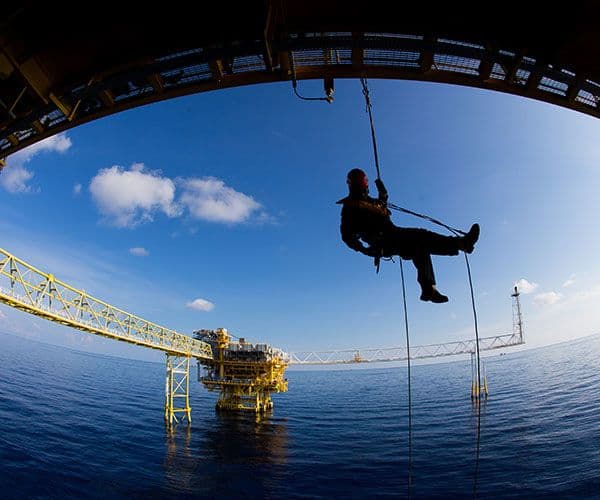
Firefighting rope: Why choose Bulwark Safety X?
The Bulwark Safety X stands out in the fire safety market as a kernmantle static rope with superior strength and resistance to abrasion, thanks to its twisted nylon type 6.6 core, 16-carrier braided HTP inner sheath, and 32-carrier HTP outer sheath. HTP (High Tenacity Polyester) is the preferred material for high-performance applications where maximum strength and minimum stretch play a critical role in safety.
In fact, the Bulwark Safety X far exceeds NFPA elongation requirements with as little as 2 percent elasticity at 300 lbf (pound-force) and 5.8 percent elasticity at 1,000 lbf. NFPA requires maximum elongation to fall below 10 percent at 10 percent of breaking strength, although the Cordage Institute standard for static kernmantle life safety rope, which is also referred to in NFPA 1983, defines static rope as having a maximum 6 percent elongation at 10 percent of the rope’s breaking strength.
A rope’s carrier number represents how many bundles of fibers are used when the sheath is woven. The higher the number, the softer the rope feels because the fiber bundles that make up the sheath are smaller. With a 32-carrier outer sheath, the Bulwark Safety X has a supple feeling and easy knotability that enables it to slide smoothly through gear and makes it simple for firefighters to handle, even while wearing gloves.
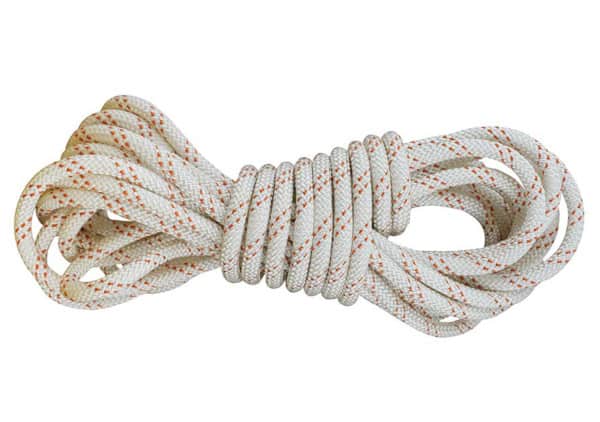
Unlike many rope companies, Canada Rope and Twine doesn’t source its products from third parties, so customers can feel confident that every rope they sell went through a rigorous manufacturing process that meets the highest standards. The Bulwark Safety X is manufactured based on the robust, SGS-certified ISO: 9001-2015 standard, a global benchmark for quality and integrity.
Priced as much as 30 percent below some other ropes on the U.S. market, the Bulwark Safety X meets NFPA 1983 standards for technical-use life safety rope. Of course, the Bulwark’s use isn’t limited to firefighting—it is also popular with other industries that rely on ropes of superior strength to keep workers safe, such as arborists and people who work on oil rigs.
The Bulwark features a melting point of 482 F (250 C) and a 5:1 recommended working load, which defines the maximum safe force that the rope can exert to lift, suspend, or lower a given mass without fear of breaking. It has excellent UV and abrasion resistance—both internal abrasion caused by surface wear and rubbing against other fibers and rope components, as well as external abrasion caused by a contact surface like wraps or winch drums. The rope also boasts good resistance to chemicals.
While the Bulwark comes in multiple lengths, the 600-foot or 1,200-foot sizes are generally preferred by firefighters. Custom lengths are also available upon request, as well as custom colors that enable fire departments to ensure that the rope they buy won’t be camouflaged by their typical rescue environments, or to simply represent their station colors.
Another key benefit of the Bulwark Safety X is that it’s carefully designed to reduce milking. When a braided rope is used, it’s normal for the fibers to set slightly, causing the rope diameter to slightly reduce and the length to slightly increase. When the rope’s core and cover lengthen at slightly different rates, the cover may “milk” off the core at the end of the rope. This does not negatively impact rope performance, but it does change the size of the rope over time. Ropes subject to milking can be addressed by cutting off the excess piece of cover and resealing the rope.
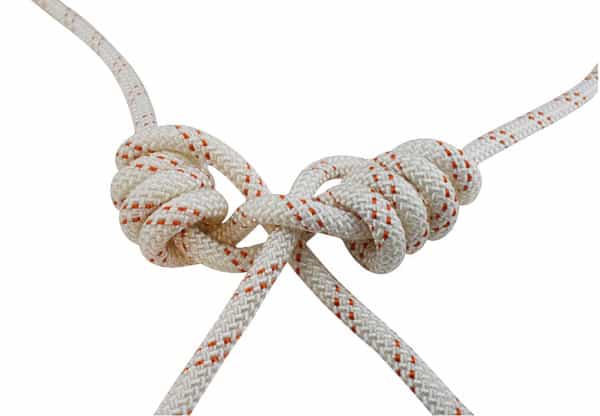
Buy quality life safety rope for greater peace of mind in rescue operations
It’s a mantra that firefighters know all too well: hope for the best but prepare for the worst. As the lightweight building materials that shape modern homes and furniture cause fires to burn hotter and faster, it’s more important than ever for firefighters to feel confident that the life safety rope they rely on will perform flawlessly during rescue scenarios.
Thirty years ago, it took an average of 17 minutes for flames to engulf a room, giving firefighters more time to escape deteriorating conditions, according to UL. The time it takes for some modern rooms to flashover: 1 minute and 30 seconds.
The UL Firefighter Safety Research Institute also says the growing use of synthetic materials is creating a thick, black smoke that quickly leads to zero visibility. People’s belongings also are increasingly made of materials that store a lot of energy, sprinkling potential combustibles throughout homes and buildings. Despite other advances in firefighting technology, first responders still rely on quality life safety rope to get out of bad scenarios quickly, as well as hoist people and objects.
Canada Rope and Twine’s Bulwark Safety X static rope gives firefighters peace of mind that they are selecting a product backed by a manufacturer that oversees every step of its production in-house, making sure the rope always meets and exceeds safety standards.
If you’re looking to purchase technical-use life safety rope, browse QRFS’ selection of NFPA-approved rope in three popular lengths:
150′ of 7/16″ (11 mm) Static Kernmantle Rope
600′ of 7/16″ (11 mm) Static Kernmantle Rope
1200′ of 7/16″ (11 mm) Static Kernmantle Rope
If you need a length or diameter not listed on the site or need another customization, simply call us at 888-361-6662 or email support@qrfs.com.
This blog was originally posted at blog.qrfs.com. If this article helped you learn about life safety rope, check us out at Facebook.com/QuickResponseFireSupply or on Twitter @QuickResponseFS.


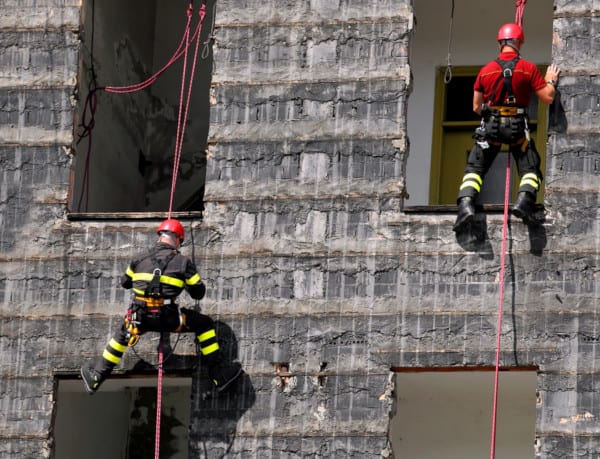
hi please help i need specifications regarding the life safety rescue rope.
Ghezae — Hello — what specifications do you mean, specifically? Thanks.